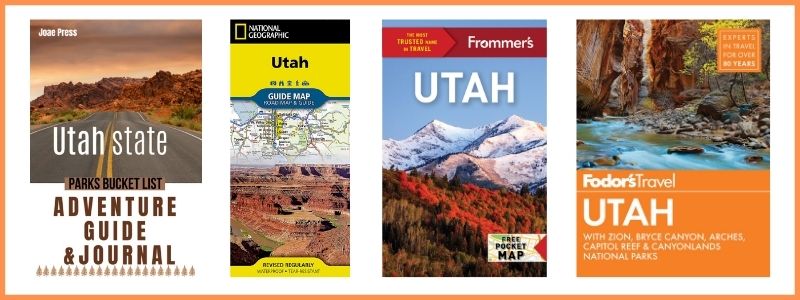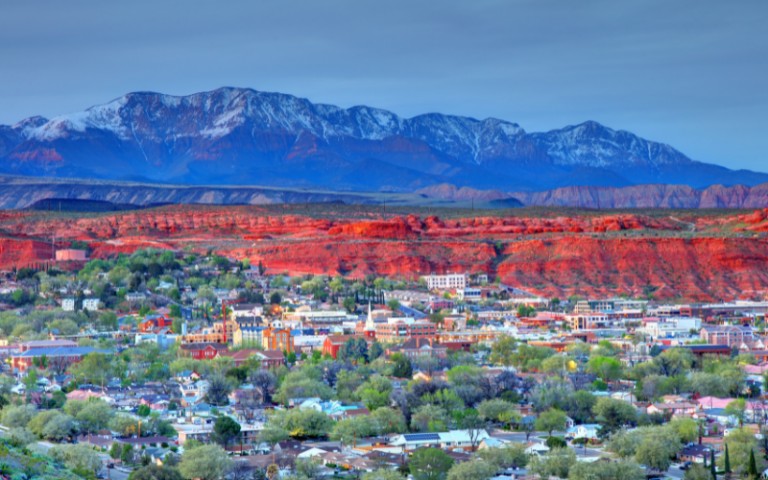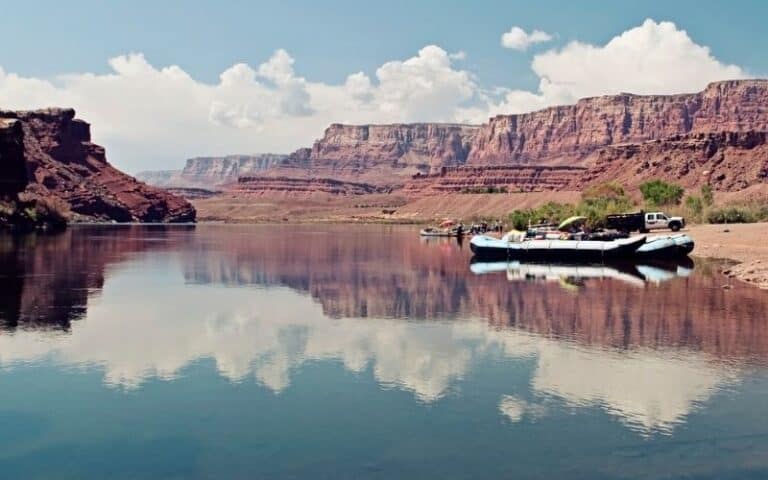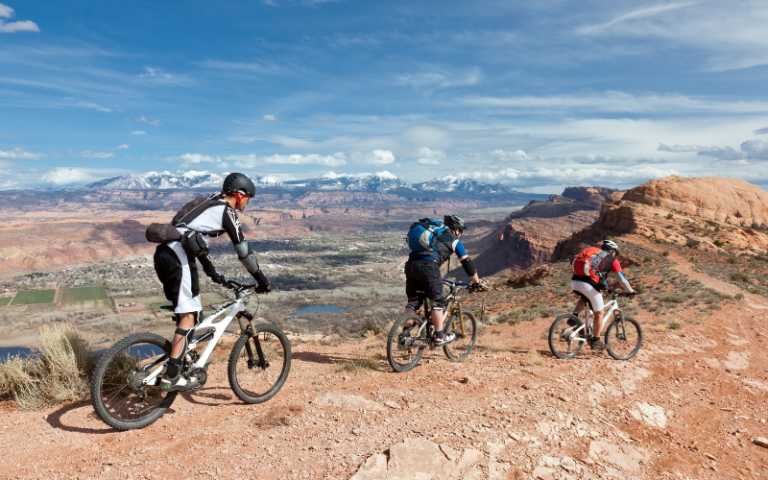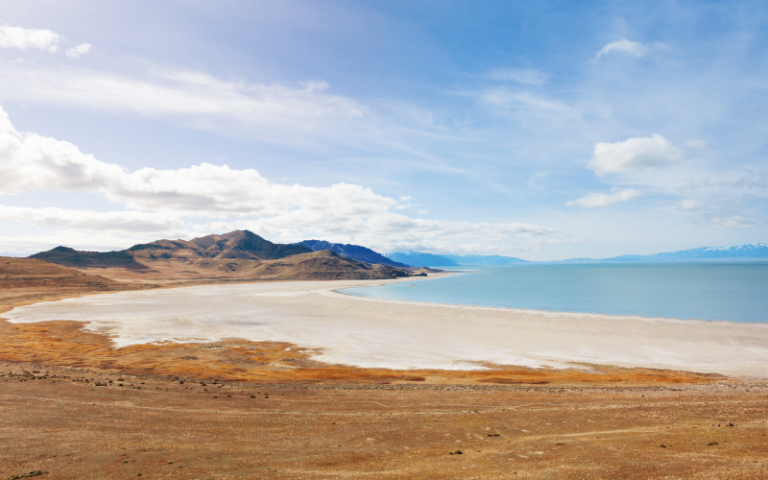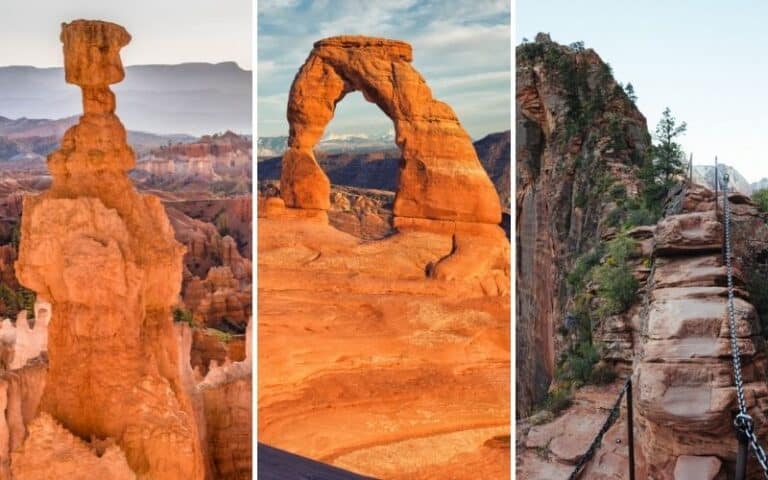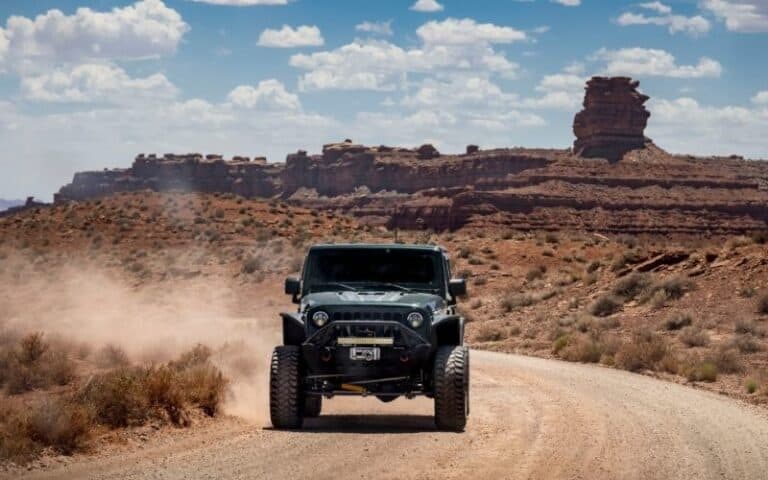Visiting Bears Ears National Monument
You’ll find a stunning landscape when visiting Bears Ears National Monument located in southeastern Utah.
Bears Ears is an incredible place to visit in Utah that encompasses nearly 1.36 million acres of land that includes archaeological sites, breathtaking canyons, and ancient cliff dwellings.
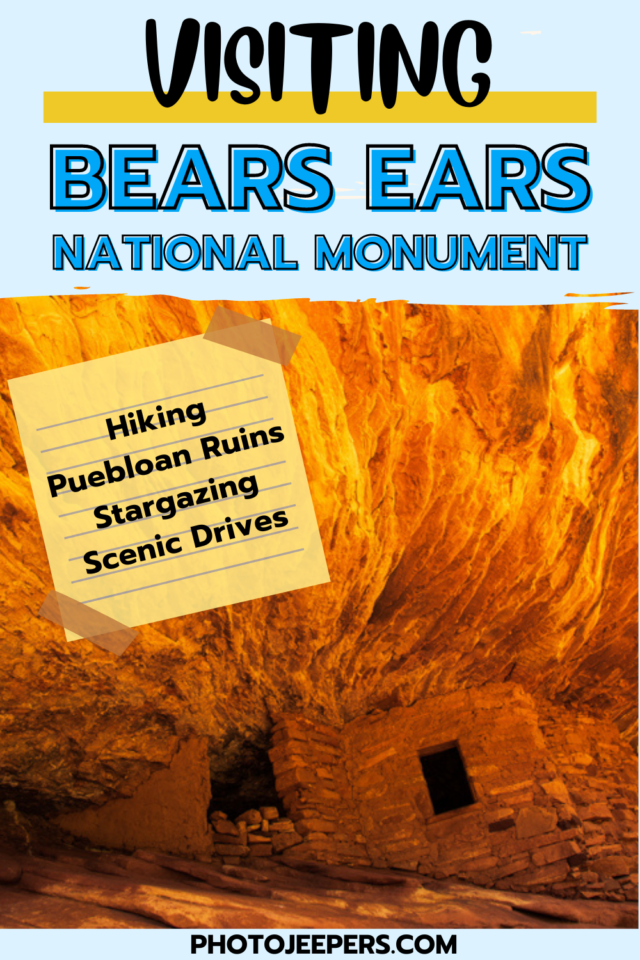
Explore and experience the beauty of the Southwest desert at Bears Ears National Monument. From hiking trails to breathtaking views from the mesas above, visitors can enjoy a variety of activities such as camping, rock climbing, scenic drives, and horseback riding.
Use our Utah Packing Lists to make sure you have the right clothing and gear for visiting any time of year! Grab your free printable packing checklist by clicking the image below!
This site contains affiliate links which means WE may receive commissions for purchases made through these links. We only provide links to products we actually use and/or wholeheartedly recommend! As an Amazon Associate, we earn from qualifying purchases. Read the full Disclosure Policy.
Visiting Bears Ears National Monument
Located in southeastern Utah, you’ll see a pair of towering buttes in the region that were named by Native Americans as Bears Ears.
Bears Ears National Monument is administered jointly by the BLM (Bureau of Land Management) and the US Forest Service. Visiting this area you won’t find facilities or services like you would at other Utah National and State Parks.
The area is rugged and remote so be prepared with clothing and gear for the weather and conditions. Fill up your vehicle with gas and pack the water and food you’ll need before leaving the surrounding cities.
Due to the elevations near or exceeding 6,000 feet above sea level, you’ll need to stay hydrated, use sun protection, and carry plenty of water! You also need to know your limits for outdoor activities!
Here’s some basic information about visiting Bears Ears:
Entrance and Permit Fees: Bears Ears National Monument does not charge entrance fees. But you will need Bears Ears permits for several hikes in the area. Some permits can be paid for at the trailheads, while others you’ll need to get from the BLM field offices.
Operating Hours: The monument is open 24 hours a day, year-round. However, some areas within the monument may have restricted access at certain times of the year.
Visitor Center: There are no visitor centers within Bears Ears National Monument, but there are several nearby that can provide information about the monument. They include the Bears Ears Education Center in Bluff, UT, and Edge of the Cedars State Park Museum in Blanding, UT.
Weather: You’ll find moderate weather conditions in the spring and fall. Summer temperatures can exceed 100 degrees, and summer monsoons can bring flash floods.
Many of the dirt roads in the monument are impassable when wet, snowy or muddy. We highly recommend checking with Rangers for current conditions!
Is Bears Ears Worth Visiting?
This Utah National Monument is more than just a stunning expanse of towering buttes and majestic red rock canyons.
Within the boundaries of Bears Ears lies a treasure trove of cultural and historical landmarks, including ancient cliff dwellings, traditional hogans, thousands of years of fascinating rock art, and places still used today by Native American communities for woodcutting, herbal gathering, and traditional ceremonies.
Exploring this awe-inspiring region offers visitors a rare opportunity to connect with the land’s rich cultural and natural heritage and immerse themselves in a unique experience.
Can You Drive Through Bears Ears?
Yes, you can drive through Bears Ears National Monument using State Route 95 and State Route 261, which provide access to many of the monument’s highlights.
Why Do They Call it Bears Ears?
The Bears Ears National Monument is named after a pair of distinctive twin buttes that resemble a bear’s ears when viewed from certain angles.
These buttes are known as the Bears Ears and have been significant to various Native American tribes for thousands of years.
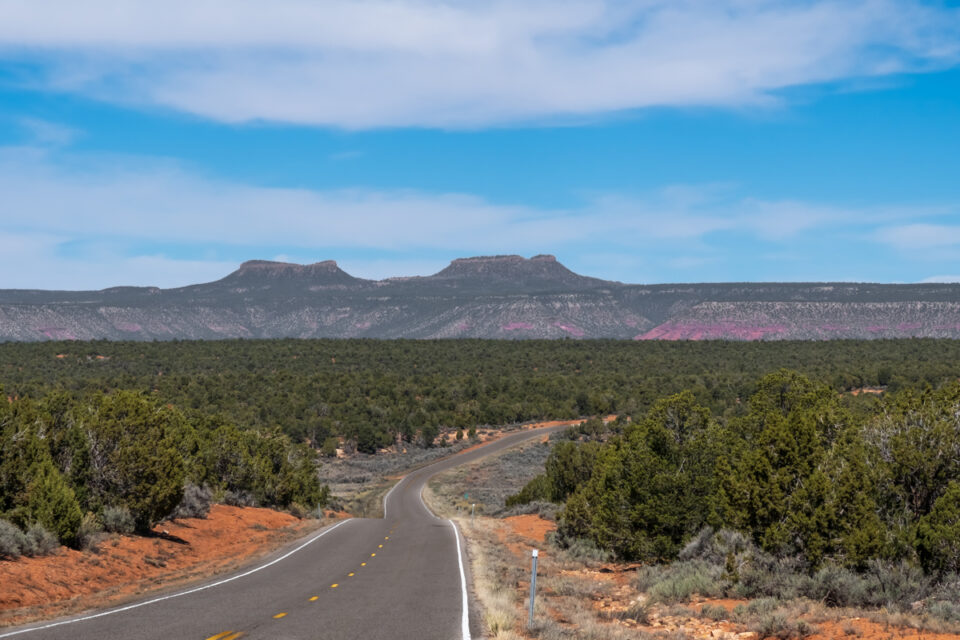
Things To Do at Bears Ears National Monument
There are a variety of activities to enjoy at Bears Ears:
Bears Ears Archaeological and Cultural Sites
There are a lot of cultural and historical sites at the monument, like ancient cliff dwellings, rock art, and burial grounds. Two cultural attractions are top-rated: Butler Wash Ruins and House on Fire Ruins (see below for hiking information).
Please show respect when visiting these sites:
- Leave artifacts in their place.
- Stay on trails, and keep pets leashed.
- Hands off rock imagery.
- Help inform others.
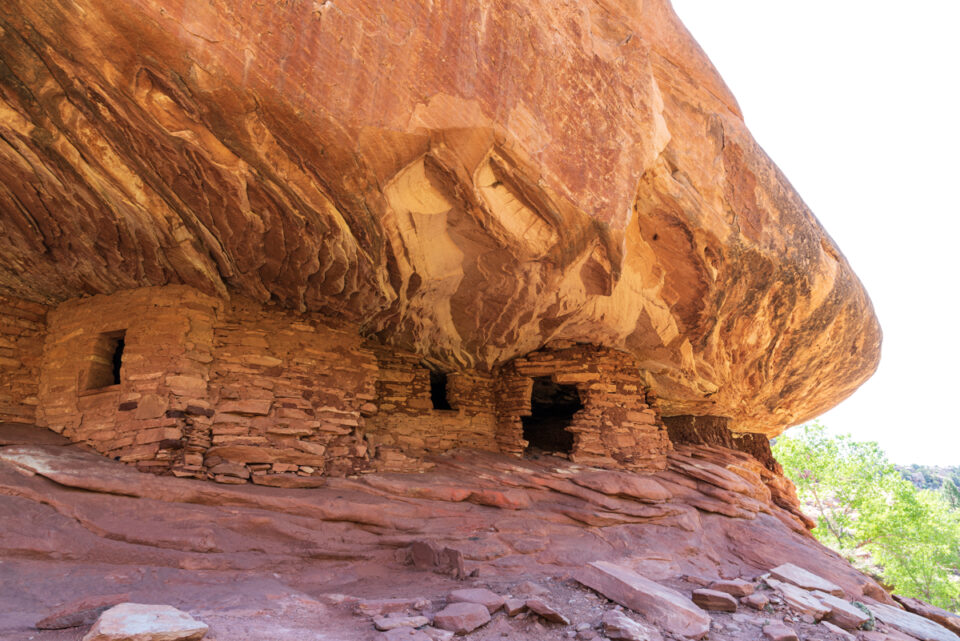
Beas Ears Hiking Trails
The monument has a lot of hiking trails, from short, easy walks to longer, more challenging ones.
Butler Wash Ruins Overlook – Well signed parking area off Highway 95. Easy walk on a well-maintained 1/2 mile round trip trail to a fenced overlook with information signs. Part of the trail is over slickrock so look for cairns to mark the path.
House on Fire Trail – The trailhead is a quarter mile down County Road 263. There is no parking area so park as close to the edge of the road as you can to allow vehicles to pass.
About 1 mile from the beginning of the trail you’ll see the ruins under a large boulder. The “fire” on the roof boulder happens between 9 am and noon depending on the time of year. It’s hard to see with your eyes. We recommend checking with your camera or phone to see if the light has begun!
Moon House Ruin Trail – This ruin got it’s name from the room with a moon painted on opposite walls. It’s a short easy hike, but the road to the trailhead requires high clearance 4×4 vehicles due to slickrock sections that have ledge step ups.
It’s a popular hike that now requires a permit during high season (March 1 to June 15 and September 1 to October 31). Only 20 permits are given out per day – 12 can be reserved in advance by calling the ranger station, and 8 are left for walk-ins. During the offseason, use the self-pay kiosk.
Natural Bridges National Monument Trails – There are short walks to each of the 3 viewpoints to see the bridges from above. Plan about 10 minutes to walk and see each viewpoint. The Horse Collar Ruin can be viewed from an overlook as well.
In order to see the bridges from ground level, or the ruins up close, you’ll need to take one of these moderate to strenuous hikes:
- Sipapu Bridge Hike – 1.4 miles RT and takes 1-2 hours
- Kachina Bridge Hike – 1.4 miles RT and takes 1-2 hours
- Owachomo Bridge Hike – 0.5 miles RT and takes 20 to 60 minutes
- Horse Collar Ruin Hike – 0.6 miles RT and take 30-45 minutes
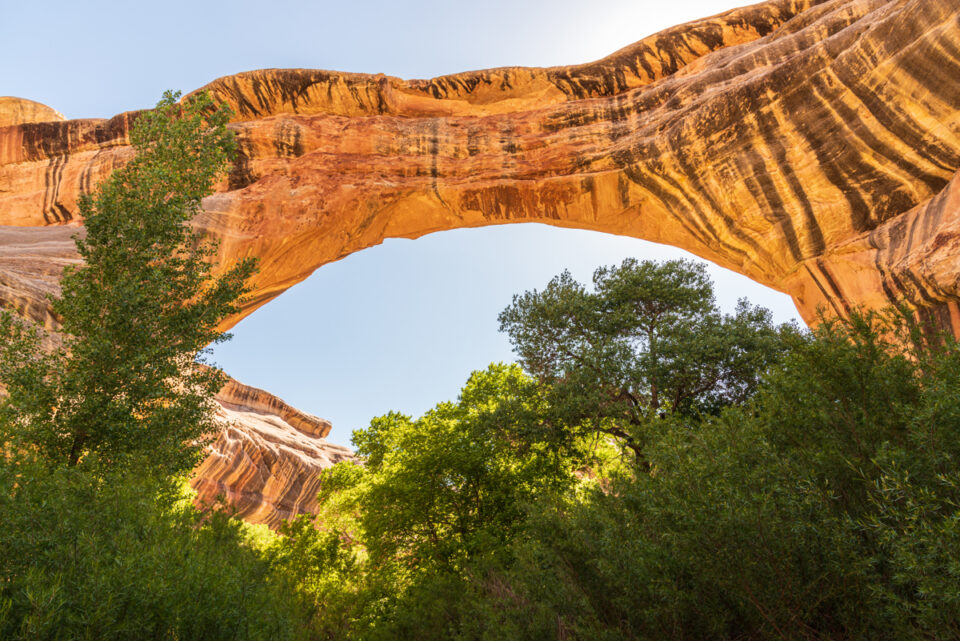
Bears Ears Rock Climbing
The monument is a popular destination for rock climbers due to its unique sandstone formations. Indian Creek is considered one of the best rock climbing areas in the world.
Spring and fall are the best times for rock climbing at Bears Ears when the temperatures are mild.
Bears Ears Scenic Drives
Driving through the monument is a great way to experience the area’s natural beauty. Stunning canyon views can be found along the Moki Dugway, a steep and winding dirt road.
The road is safe and passable for passenger vehicles, but drive with extra caution, especially if pulling a trailer or driving an RV. It’s wide enough to allow passage of vehicles. There are no guard rails along the dugway.
Is Moki Dugway to drive? Yes! The road is steep, but well constructed and maintained. Keep to a low speed and stay alert as you drive and it’s not more dangerous to travel than other high-mountain roads.
This Utah Scenic Drive connects Utah Highway 95 with US Highway 163. This stretch of Utah Highway 261 is part of the “Trail of the Ancients”, a national scenic byway for travelers to see multiple archaeological sites and unique geological formations.
Along the route you’ll enjoy views of Valley of the Gods and Monument Valley in the distance along the horizon!
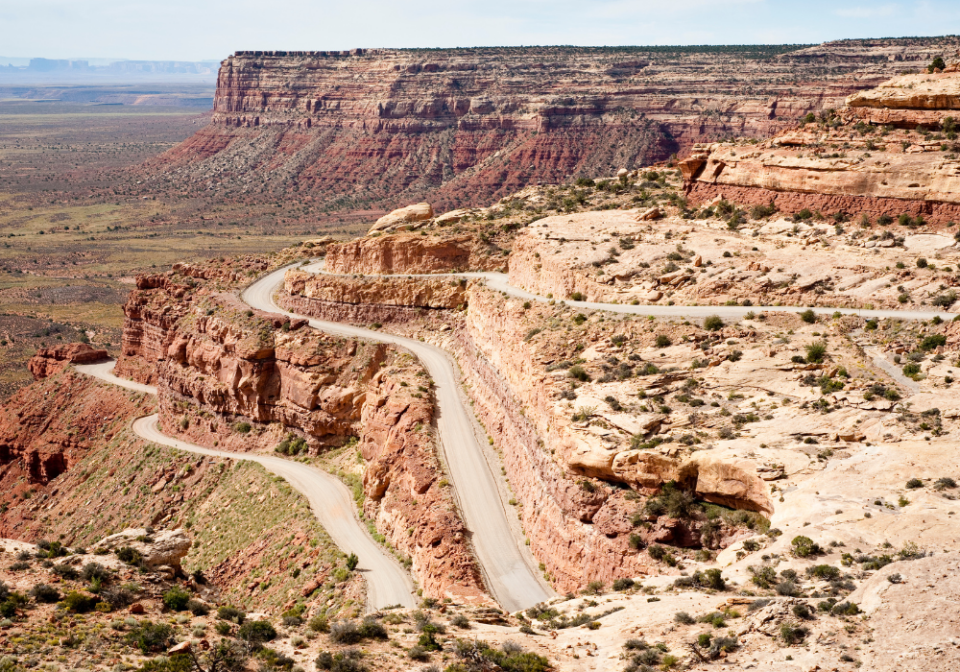
More Bears Ears National Monument Activities
Bears Ears bikepacking: The monument boasts an extensive network of bike-friendly trails and twin-track service roads that meander through majestic sandstone canyons, catering to seasoned and novice cyclists. With hundreds of miles to explore, bikepacking is an opportunity to discover the hidden gems of this awe-inspiring destination.
Bears Ears Stargazing: The monument’s remote location and dark skies make it an excellent place for stargazing. Visitors can see a dazzling array of stars and constellations on clear nights. Definitely take time one evening for enjoying dark skies over the Bears Ears.
Bears Ears Rafting and Kayaking: The San Juan River runs through the monument, providing opportunities for rafting and kayaking. Guided tours and rentals are available from local outfitters.
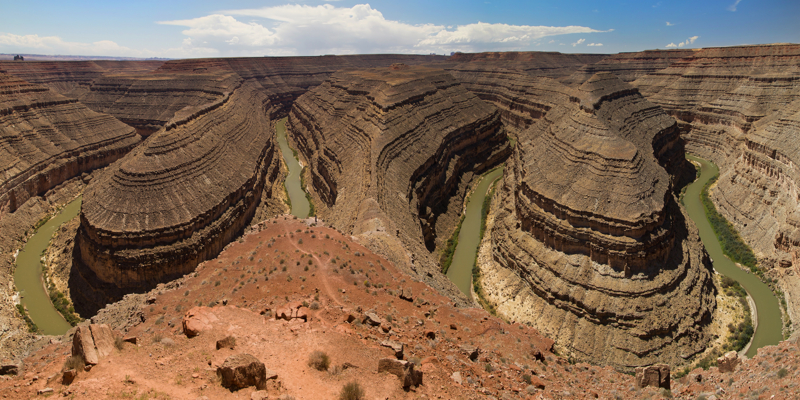
Bears Ears Photography: The monument’s stunning landscapes and cultural sites offer endless photography opportunities: Natural Bridges, House on Fire, Valley of the Gods, and Goosenecks State Park to name a few of the amazing photo spots in Bears Ears!
Definitely pack your camera gear to capture the beauty of this national monument.
Bears Ears Camping: Camping is allowed in designated areas within the monument with several campgrounds to choose from. Backcountry camping is also allowed with a free permit.
Things To Do Near Bears Ears National Monument
- Natural Bridges National Monument
- Hovenweep National Monument
- Needles Canyonlands
- Moab, Utah Vacation Guide
Utah Bucket List
To help make your trip planning easier, we’ve compiled this comprehensive list of must-do activities that belong on every Utah Bucket List: things to see, do and taste all around the state! Grab the free download by clicking the graphic below!


